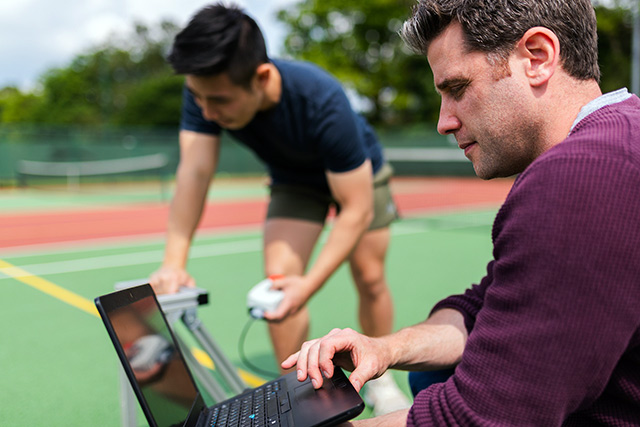Biomechanics is the sport science field that applies the laws of mechanics and physics to human performance, in order to gain a greater understanding of performance in athletic events through modeling, simulation and measurement.
Latest Pages
- Reaction Froces in Sports [Nov '23]
- Biomechanics at the 1900 Olympic Games [Dec '15]
- biomechanics courses [Mar '15]
- Biomechanics videos [Sep '14]
- Magnus Force and Centripetal Force [Apr '13]
- Center of Gravity [Mar '13]
- Coefficient of Restitution [Feb '13]
- Methods for calculating speed and calculating distance using video. [Sep '10]
- Video analysis technique [Sep '10]
- Video Analysis [Mar '10]
- A career in sports biomechanics [Jun 09]
It is also necessary to have a good understanding of the application of physics to sport, as physical principles such as motion, resistance, momentum and friction play a part in most sporting events.
Biomechanics is a diverse interdisciplinary field, with branches in Zoology, Botany, Physical Anthropology, Orthopedics, Bioengineering and Human Performance. The general role of biomechanics is to understand the mechanical cause-effect relationships that determine the motions of living organisms.
In relation to sport, biomechanics contributes to the description, explanation, and prediction of the mechanical aspects of human exercise, sport and play.
 biomechanist at work
biomechanist at workMore information
- Sport-specific Biomechanics pages.
- Articles about Physics for Sport
- Resources: Biomechanics Books and Biomechanics links.
- The importance of Angle of Release
- See ideas for sports science fair projects that will enable you to explore your favorite sports and learn more about the principles at work behind them.
- Careers as a Sports Biomechanist, and sports biomechanics courses.
- A guide to Video Analysis in Biomechanics
- Some Biomechanics videos


 Upcoming Events
Upcoming Events